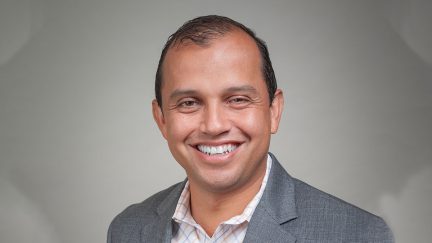Never miss a story — sign up for PLANADVISER newsletters to keep up on the latest retirement plan adviser news.
Could Health Care Regulation Go the Way of Retirement Plans?
Regulation from CAA ’21 is pushing employer-sponsored health care programs toward fiduciary rules that will look familiar to retirement plan advisers.

In December 2020, Congress passed the more than 5,000 pages of the Consolidated Appropriations Act, including $900 billion in COVID-19 stimulus relief.
At the time, the country was still in the grip of the pandemic, and attention was focused on the spending bill’s unemployment benefits, business loans and distribution of COVID-19 vaccines. But within the heavily COVID-related act, a roughly 100-page section of the bill that landed alphabetically after letters A through Z in “Division BB” may, according to industry experts, push the private health care industry the way of retirement benefits. That is: heightened fiduciary standards, increased transparency and increased litigation that, according to LinkedIn advertisements from law firm Schlichter Bogard LLP, may already be ramping up.
“CAA has drawn a lot of parallels between the retirement industry and what is happening in health care today,” says Michael Thompson, CEO of the nonprofit National Alliance of Healthcare Purchaser Coalitions, which represents health benefit plan sponsors and is in favor of the increased regulation. “Part of CAA concerns the broader disclosure of how money is flowing and who is getting paid for what. … All of that is creating an environment of transparency that is unprecedented in the health care side of the business.”
Thompson and other industry watchers point to the Pension Protection Act of 2006, which sought to both protect workers who had been promised pensions by employers and to expand their rights and protections when contributing to a defined contribution retirement plan. The PPA, as viewed by Thompson and others, began a years-long transformation—in part driven by knock-on litigation—that created the transparency and strong fiduciary responsibility which now characterize retirement plan administration and participant interaction.
“Before [the Pension Protection Act], the average fee load in the retirement space was in the 200 [basis points] range—now the average load is more like 50 bps,” Thompson says. “That speaks to what is happening behind closed doors right now in health care and what is sustainable once it’s brought to the light of day. There are a lot of 200-bps situations in health care right now.”
The “Private Health Insurance and Public Health Provisions” section of CAA ’21 immediately enacted multiple provisions targeting health care benefit providers and brokers. Those regulations included fiduciary responsibility to price shop for the best deal for employees; requirements to report drug pricing and pharmaceutical information to government regulators; and the monitoring of the direct and indirect compensation received by health industry broker/dealers.
Plan Sponsor Responsibility
While many of these reporting requirements start with health care providers and brokers, the real fiduciary and monetary onus ultimately falls to plan sponsors, says Hugh O’Toole, CEO of Innovu Inc., a benefits consultancy that offers plan sponsors services related to CAA ’21.
“Transparency is the great disinfectant,” O’Toole says. “When they couldn’t get the providers to be transparent, they went to the businesses. … That has worked in retirement, and they have mimicked the retirement laws now in health care.”
O’Toole, who sees the CAA ’21 legislation as having “snuck into the bigger COVID bill,” has witnessed a slow adoption of the new regulations by plan sponsors stemming from a lack of education from the health care delivery system. Pittsburgh-based Innovu, which is soliciting business with clients regarding CAA ’21, has a dedicated section of its website with articles showing headlines such as “The Consolidated Appropriations Act Tool Kit,” “Did You Know? The Consolidated Appropriations Act” and “CAA Legislation is NOT Delayed.”
The industry’s slow response to the provisions, some of which have been staggered or held back due to regulatory clarity, appears to have been noticed by regulators. The Departments of Labor, Health and Human Services and the Treasury issued additional guidance on the regulations in February to clarify some rules and put a timeline in place for regulatory action.
The guidance also provided crucial clarity on the section prohibiting health service providers from including “gag clauses” in contracts with plan sponsors. As explained by Innovu, a gag clause prevents an employer from having access to health data for its own employee participants for plan benchmarking or to use in a request for proposal process. At the end of this year, health plans must attest to regulators that they have not entered into any gag clause contracts with plan sponsors.
The DOL did not respond to a request for further elaboration on the timeline for or expectations of regulatory action.
O’Toole does not believe the FAQ created urgency in the health care industry or among plan sponsors, guessing that “maybe 5% of employers in America have even started the conversation.”
Litigation Pending
As 2024 nears and CAA regulations hit key deadlines, the chances of lawsuits being filed against plan sponsors is going to rise, according to multiple interviewees.
As reported by the National Association of Plan Advisors on Monday, the St. Louis-based law firm Schlichter & Bogard, including famed retirement litigator, managing partner and co-founder Jerry Schlichter, has been posting advertisements on its LinkedIn page seeking potential employee plaintiffs regarding health care plans run by Target, State Farm and PetSmart.
“Are you a current State Farm employee who has participated in the company’s health care plan?” one post states. “You may have a legal claim—and we’d like to speak with you.”
An early case stemming from CAA ’21 is a 2021 suit filed by a school district in Osceola County, Florida, against a consultant that had advised it on choosing an insurer. The district claimed a consultant working for Arthur J. Gallagher & Co. (which also has a retirement advisory division) was taking undisclosed commissions from insurance company Cigna. Gallagher denied the claims, and the case was settled for $585,000, according to court filings.
Andrew Oringer, partner and general counsel in the Wagner Law Group and an expert in Employee Retirement Income Security Act law, points out that the fee-disclosure guidelines in the Florida case and now in place for health care plan sponsors echo the 408(b)(2) disclosure rules that have been in place in the retirement industry. The underlying rules generally require that plan fiduciaries ensure arrangements with service providers are “reasonable,” as well as transparent to the plan sponsor.
“There’s a question as to whether the costs are appropriate, because there could maybe be undisclosed compensation that should have an impact on cost,” Oringer says. “For example, instead of that money flowing in a certain direction, maybe it should flow to the benefit of participants. But if you don’t know where the money is flowing, then you might not even know to ask about it.”
Oringer says it makes sense that awareness of these new rules is not universally immediate in the health care industry as was more the case in the retirement industry, which has become “accustomed to significant changes to rules, so people’s antennas are up.” As the health care industry catches up, he believes the new rules will start to impact practice.
“History has shown that knowledge of indirect payments like those at issue here on the part of plan fiduciaries, where the plans and their sponsors are customers to vendors and other service providers, could well change the behavior of those customers,” he says.
DC-based health care alliance head Thompson believes future litigation will further push CAA ’21 regulation to the forefront of the sector’s radar.
“That kind of unseemly compensation [alleged in the Florida case] is a conflict of interest,” Thompson says. “You can see the writing of where this all could go. If it goes down the path the way it did in retirement, then health care will be subject to that level of scrutiny. The more we open up the covers, the more we might see challenges to the current order.”
You Might Also Like:

What Should Fiduciaries Expect in Health Plan Service Fee Disclosures?

Latest ERISA Cases from Schlichter Bogard Address Voluntary Benefits

2025 Top Retirement Plan Adviser: Alvaro Galvis
« The PLANADVISER Interview: Miles Cole, Follow Co-Founder and CEO